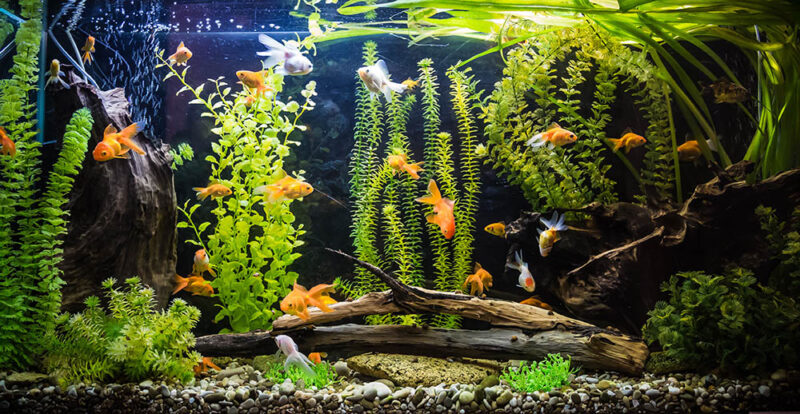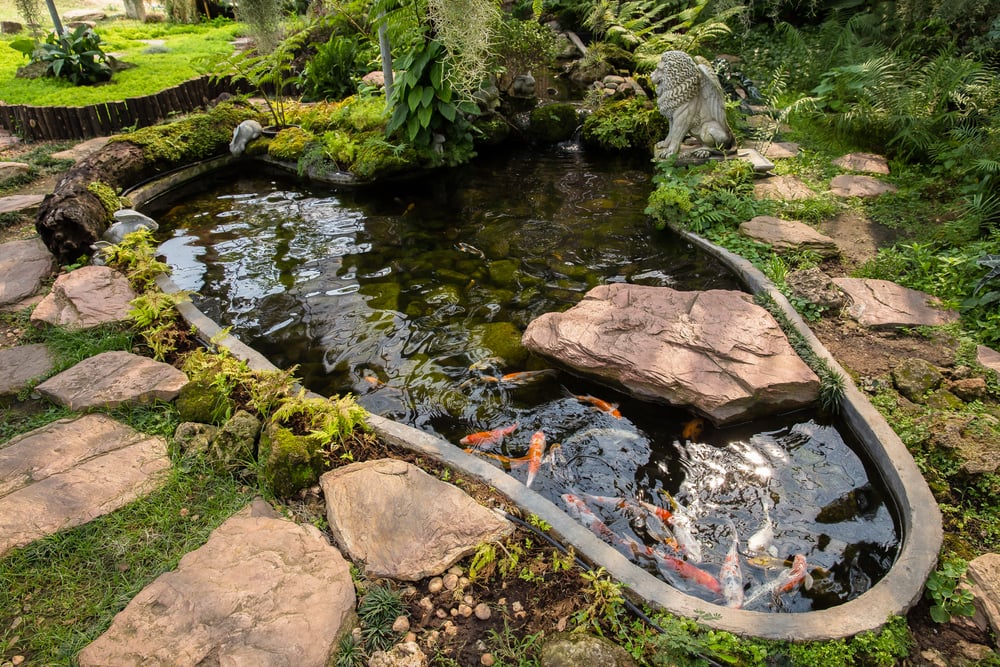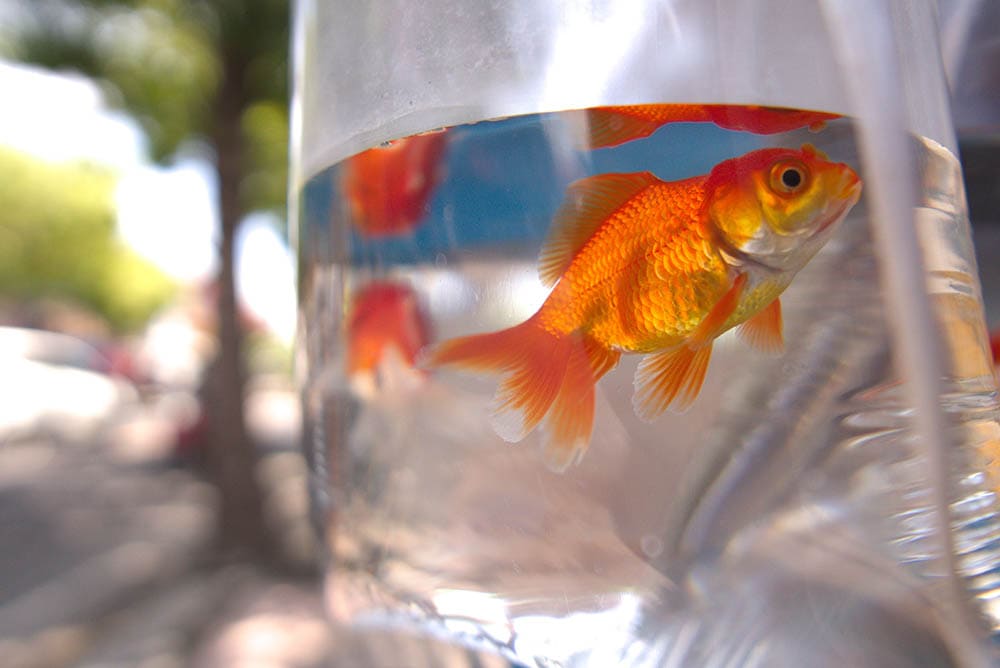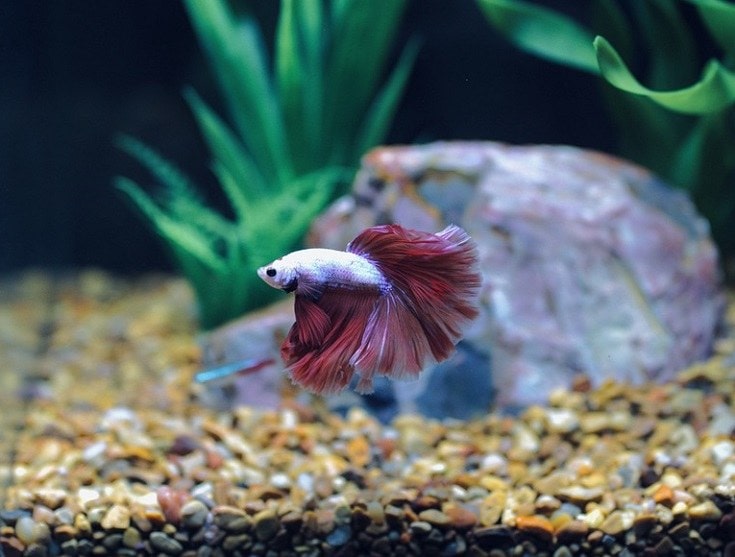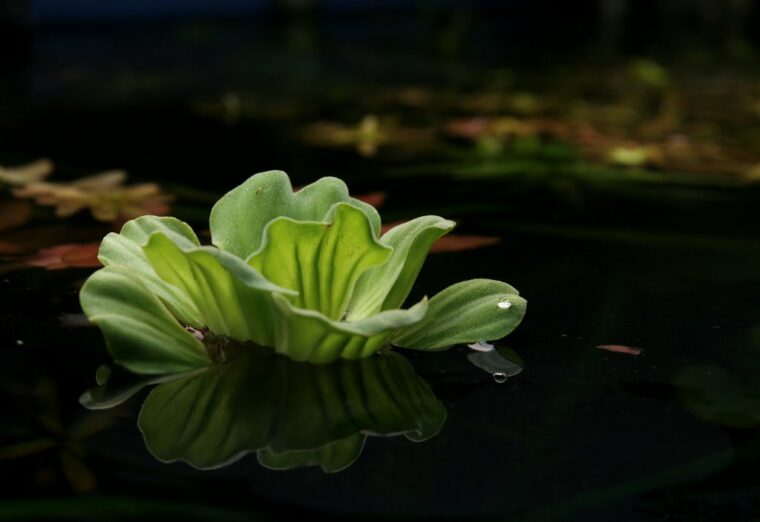
With its light, cheerful green leaves and its long, floating stems, water lettuce is one of the most recognizable water plants out there. Despite the name, these plants aren’t related to lettuce or cabbage at all—they are a separate species of plant entirely. These plants are common in ponds and aquariums because they have pretty, attractive leaf clusters and are easy to grow and care for. They make great beginner plants because they grow well once established and tolerate many common aquarium conditions.
Useful Information About Water Lettuce

| Family Name: | Araneae |
| Common Name: | Water lettuce, water cabbage, shellflower, Nile cabbage, tropical duckweed |
| Origin: | Africa and South America |
| Color: | Bright, light green |
| Size: | 2–10 inches wide, 12+ inches long |
| Growth Rate: | Moderate |
| Care Level: | Easy |
| Lighting: | Medium |
| Water Conditions: | 64–86 degrees F
pH 6–7.5 |
| Minimum Tank Size: | 10 gallons |
| Supplements: | None |
| Placement: | Floating |
| Propagation: | Runners, Seed |
| Compatibility: | Tropical freshwater tanks |
Water Lettuce Appearance
From above, water lettuce looks almost like clusters of green flowers growing on the surface of the water. These floating plants are made out of rosettes of rounded, hairy leaves that are usually a pale green. Near the middle of the rosette, you can sometimes find tiny yellow or white flowers.
Underwater, water lettuce is also distinctive, with long, trailing root systems that become thick and tangled. These root systems offer space for your fish to swim through and hide in, although they aren’t usually thick enough to obscure your view entirely.
Water lettuce often reproduces through asexual runners that connect cloned plants, although they can reproduce via seed as well. Sometimes they create interconnected webs of plants connected via runners.
Where to Find It?
Water lettuce is likely native to the Nile River Delta, although it is widespread throughout South America as well. It is an invasive species in many warm, semi-tropical places throughout the world, including parts of the US. It is illegal to own water lettuce in Alabama, California, Florida, Louisiana, Mississippi, South Carolina, Texas, and Wisconsin because of its invasive nature. In the rest of the US, it is easily found through online retailers and pet supply stores.

General Care
Water lettuce grows well in tanks with moderate lighting and room temperature water, about 64–86 degrees Fahrenheit. They don’t need any special nutrients or supplements and get the bulk of their nutrition from the water and air around them. They do require a fair amount of humidity so in drier climates a tank hood might be necessary to keep sufficient moisture in the air.
In some tanks, water lettuce will require careful pruning to avoid overtaking the tank and blocking out light and oxygen. Runners should be trimmed as they appear unless you want to carpet the entire surface of the water. The roots also need regular trimming to avoid becoming overgrown and tangled.
If you have vegetable-grazing fish, much of the pruning work may be done for you. Grazers like goldfish will nibble on the roots and leaves, keeping the plant in check. In most cases, this isn’t enough to kill the plant, but it may require you to be more careful when pruning.
Habitat, Tank Conditions & Setup
Water lettuce doesn’t require much in the way of tank conditions, as it is a fairly adaptable plant. It does well in tanks 30 gallons and larger, with bigger tanks always being better. It appreciates high humidity and temperatures slightly warmer than room temperature, although it can tolerate water temperatures of between 64–86 degrees. It grows best in water with a pH around 6–7.5. It grows well under moderate lighting—too bright of lighting often causes leaves to burn and wither, while low lighting might not be enough to sustain it. It does well in slow-moving water and will filter out nitrates and waste products.
Planting Tips
Water lettuce is extremely easy to plant because it floats on the water’s surface and doesn’t require substrate. Place it carefully onto the water’s surface and you are good to go.
If you want to plant other plants along with your water lettuce, go for other freshwater tropical plants that do well in a similar temperature range. It often provides shade for other plants, so plants that do well in low light are a good choice to pair with water lettuce.
The 5 Benefits of Having Water Lettuce in Your Aquarium
1. Filtration
Water lettuce helps filter out many toxins that can harm your fish, including waste products like nitrates and phosphate.
2. Cover
Water lettuce provides cover for small fish and an exciting playground of roots for fish to swim in. It makes a great choice for tanks with fry and larger fish as it offers protection to the fry.

3. Shade
Water lettuce provides shade that can be beneficial for many other aquatic plants. This helps it pair well with other plants.
4. Ease of Growth
Many plants require a lot of work to plant and keep alive, but water lettuce is extremely easy to grow, without any need for substrate.
5. Algae Reduction
Algae prefer to bloom in water that has a lot of light, nitrates, and phosphorus. Water lettuce can outcompete algae and block light sources, reducing algae spread.
Concerns About Water Lettuce
One of the biggest concerns about water lettuce is its ability to reproduce easily and its potential for becoming an invasive species. Water lettuce shouldn’t be released into waterways or kept in outdoor ponds that have any chance of connecting to the native water system. If you dispose of water lettuce, make sure you follow precautions to keep it out of your area.
Water lettuce can also cause problems in a tank if allowed to overgrow. The thick, beautiful roots of water lettuce can grow over filters, crowd out other plants, and even crowd out fish. The canopy can also block light, heat, and oxygen if overgrown. It’s important to keep water lettuce under control in your tank through regular pruning.
Conclusion
In states where water lettuce is a legal tank plant, it makes a great choice for freshwater aquariums because it is so simple to grow and easy to care for. It’s also a beautiful water plant that adds interest to your tank above and below the water. If you choose to keep water lettuce in your tank, you may have to watch it carefully to avoid overgrowth, but it is still a perfect plant for beginners and experienced aquarium keepers alike.
Also See:
- Complete Care Guide for Planting & Growing Water Sprite in Your Aquarium
- 9 Easy Steps for Growing Aquarium Plants Successfully
Featured Image Credit: Water Lettuce (Image Credit: Anandarajkumar, Wikimedia Commons CC BY-SA 3.0 Unported)

